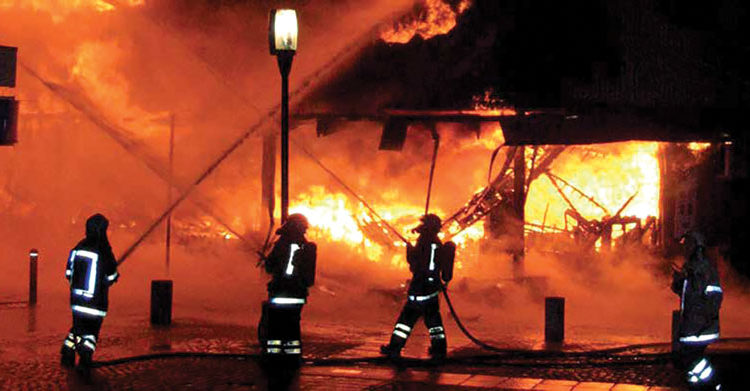
In cases where the scene temperatures have low contrast, FLIR’s Flexible Scene Enhancement (FSX) technology can be of great help

Firefighters rely on reliable technology to perform demanding tasks: locating people in a smoke filled room, finding their way through smoke and dark areas… Luckily, thermal imaging cameras can support them in a lot of these tasks. Thermal imaging cameras use the heat emitted from the environment to see through smoke, locate subjects or visualize hot spots. However, in cases where the scene temperatures have low contrast, it can still be hard and time-consuming to get a good picture of the situation. That’s where FLIR’s Flexible Scene Enhancement (FSX) technology comes in.
The new Flexible Scene Enhancement (FSX) technology, which is featured on the FLIR K55 camera, provides enhanced image detail in the thermal video image. Firefighters can use the K55 to see ultra- sharp thermal images with the smallest of details.
What is FSX?
Thermal imaging cameras (TICs) from FLIR Systems present a clear image in the darkest environments and in smoke. Sometimes however, it can be difficult for a thermal camera to detect a target, even though it is in the theoretical range of the camera. Even if the TIC can resolve the target, it may be difficult for the user to discern, unless the user knows exactly within which part of the signal span the target is hidden. This will increase the time to detect, or even worse, let certain events go undetected. That’s why FLIR Systems has developed a powerful algorithm that helps the firefighter overcome the problem of finding low contrast targets in high dynamic range scenes.
FSX is an advanced non-linear image processing algorithm that preserves detail in high dynamic range imagery. FSX will extract image details, like edges and corners, from the original image. These details are weighted and combined with the original image to create an image with enhanced details. In fact, the detailed image matches the total dynamic range of the original image, making the details visible to the user, even in those scenes with extreme temperature dynamics that are typical for a firefighter’s job.


Shorter time to detect
Firefighters need to detect targets quickly, without making manual adjustments to the gain and level. This is all made possible with FSX. FSX ensures a clear, crisp image in every possible fire scene making the smallest of temperature differences visible. A small hot object against a cold background will have just as clear of details as the background, which is the dominating temperature range.
Thanks to FSX, people can be more easily detected in hot environments like fire scenes. Unlike many other detail enhancement methods, FSX is extremely adaptable to changing conditions. This means that an FSX-equipped camera will produce near perfect thermal video under virtually every condition, which allows firefighters to concentrate on the image and not on the controls.

Thermal imaging cameras for firefighting applications
Entering a burning building or approaching an industrial fire is a dangerous job. Firefighters need to heavily rely on their team and gear. Thermal imaging cameras are exceptional tools that help firefighters protect the lives of others as well as their own.
Thermal imaging cameras can see through smoke, giving firefighters better situational awareness, both of where they are in the building, and where they are in relation to their team members. It also helps them to find people trapped in a fire. Thermal imaging cameras are also used for overhaul, during wildfires and for Search & Rescue applications. Since they are able to measure and visualize temperatures from a distance they also help firefighters to protect themselves against rollovers and flash overs.
Every thermal imaging camera is an asset for a firefighter during an intervention. A thermal imaging camera that is equipped with FSX will produce an ultra-sharp and crisp thermal image that shows the smallest details, allowing the firefighter to make the correct decision when seconds count.


